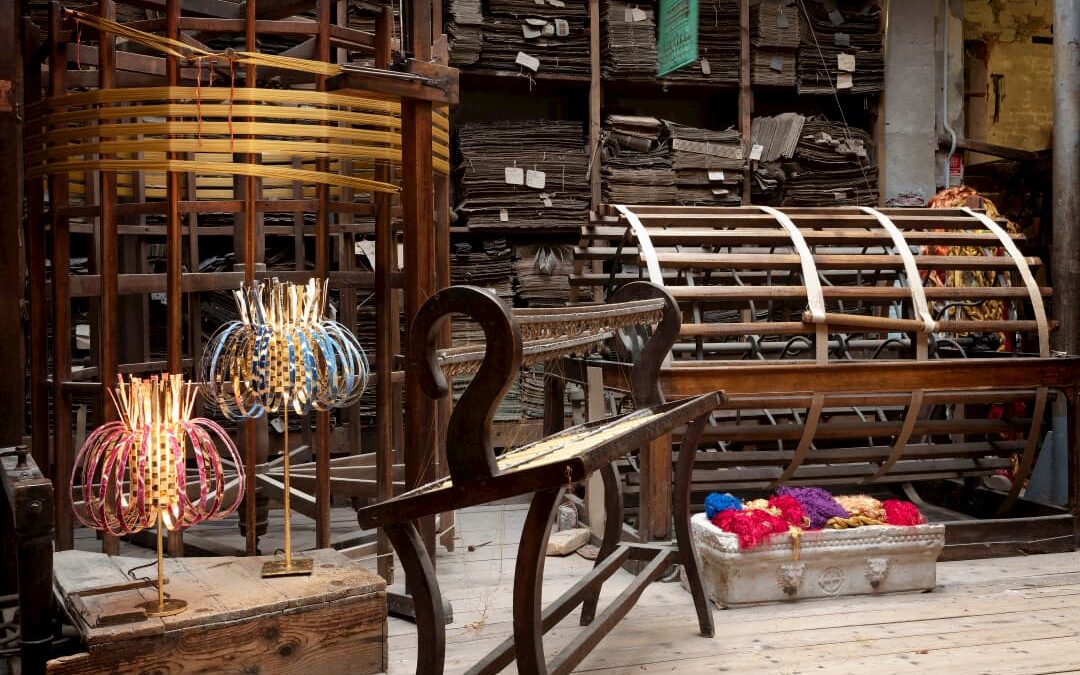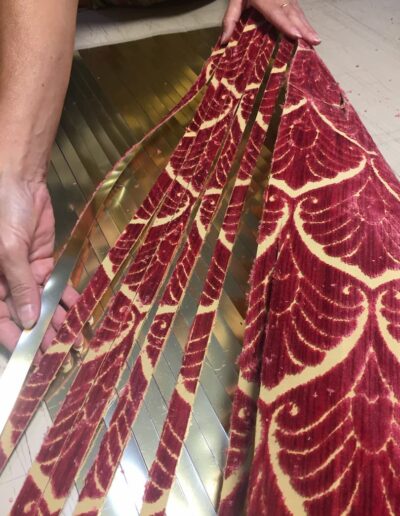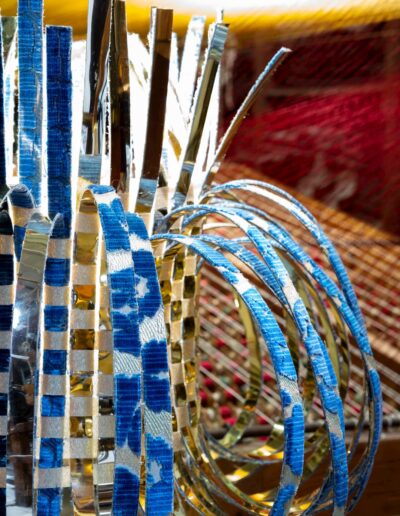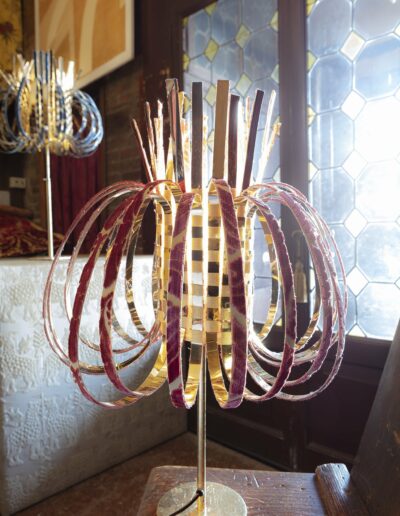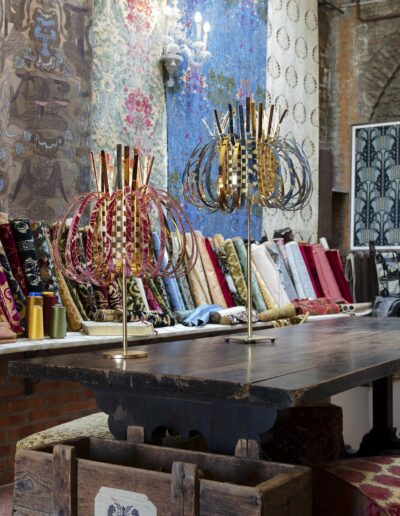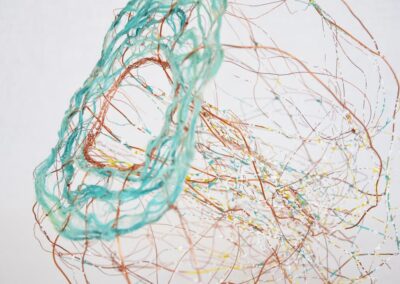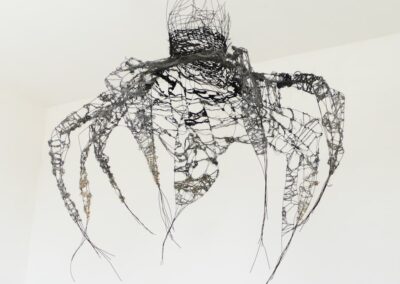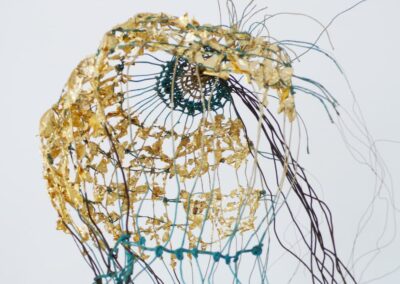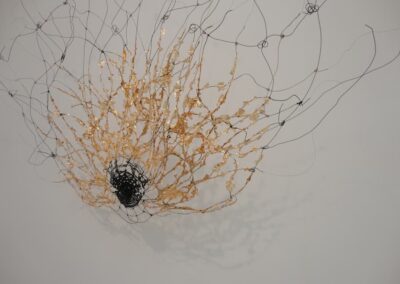In Venetian dialect, the “sghiribizzo” is a sudden idea, sometimes bizarre, and certainly unexpected. This is the name that Patrizia Polese, textile artist, wanted to give to one of her most recent creations: a lamp, whose inspiration comes from the encounter with our fabrics. She will tell you how.
A velvet lamp with a modern and unique design
A velvet lampshade is certainly not new in the world of furniture, although no one has ever used one of our velvets for this purpose. Or, at least, until the OltreDesign Festival last May, an event held in Treviso and during which our CEO, Alberto Bevilacqua, came in touch with Patrizia Polese.
“All credit to Alda Buzzetto, President of OltreSegno, the Cultural Association that organises the Festival”, explained Patrizia Polese. “She arranged my meeting with Mr Bevilacqua, and she allowed me to interview him during OltreDesign. On that occasion, Mr Bevilacqua provided the association with one of the velvets produced by the Tessitura. I was then allowed to use it on a lamp that I had been thinking about for some time.
But how was Sghiribiss born?
“Some time ago, I happened to be in a shop where they were throwing away a lot of strapping (the thin metal strips used to close packages). I recovered and folded them using a technique I invented, which involves creating the wire in 3D. The shape of the lamp is the result of the technical characteristics of the material itself. A fundamental help came from the studio Donner Sorcinelli Architecture, with whom I designed all the versions of the lamp: suspension, floor lamp, floor lamp, wall lamp and table lamp. However, the whole project was on hold until I got the fabric.
Using it, however, was more difficult than expected:
“I have to admit I had a certain fear of cutting such a precious fabric! But I found another valuable help, in a craftswoman who makes wall lamps, who helped me cutting and applying the strips of fabric on the structure of the pendant lamp”.
The work of a textile artist
Like many of Patrizia Polese’s works – some of which you can find at the end of the article -, Sghiribiss is the result of “three-dimensional weaving”.
“The three-dimensional weaving starts from a sort of jig on which I create the first interweaving, with the materials I have chosen. Above it I then create the subsequent interlacing, thus obtaining sculptures of large dimensions, such as Present, which measures 2×2 meters, or smaller, such as Iris.
Why did you choose this type of art?
“I’ve always had a certain inclination towards fabrics: I studied at a tapestry school in Milan, after having worked for a long time as a restorer. Even during my studies, I explored vacuum and three-dimensionality, using very plastic materials. The choice of the tapestry school was very instinctual but, while I was attending it, I understood that my decision was rooted in my childhood, which I lived surrounded by threads. Let me give you an example: one of the materials I use for my works is sisal, which I chose for the first time instinctively, but then realising that it was its smell that attracted me. It is a fibre used to bind bundles of wheat, so its scent has reminded me of my childhood in the countryside. I feel the same sensations when I enter the Tessitura Bevilacqua: it always leaves me speechless, it’s an all-encompassing sensory experience. It is, therefore, a great honour for me to be able to use their fabrics”.
Do you have any other projects in mind with Bevilacqua fabrics?
“Right now I’m working on the other versions of Sghiribiss, using the fabrics provided by Tessitura Bevilacqua, which I’m trying to enhance to the maximum. I believe they are suitable for many projects, including artistic ones, and this is one of the ways to link such an ancient product to the contemporary, as Tessitura itself tries to do”.
Photo credit: Massimo Poldelmengo

